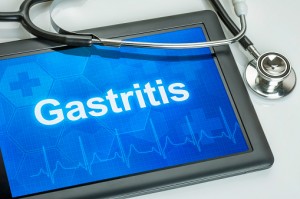The Weight Loss Exercises Energy Cycle
The body has three cycles for providing energy during exercising. Each of this cycles demand energy from your body in a different way. However, only one of them is most effective in resulting to weight loss, hence the term weight loss exercises.
Phosphagen Energy Cycle
First is the phosphagen cycle. This is an energy cycle that does not depend on oxygen. It is anaerobic meaning "without oxygen". In place of oxygen it uses a compound in the body called creatin phosphate.
The cycle makes energy for about 8 to 10 seconds only. Energy here is produced very fast as it takes only one chemical reaction to produce it. This is principally the energy cycle 100 meters sprinters use.
Glycogen-Lactic Acid Energy Cycle
The second cycle is the Glycogen-Lactic acid cycle. There about 12 reactions involved here to give energy. As a result it gives energy at a slower rate. In this case the cycle uses the immediate energy reserve of the body called glycogen. Glycogen is a simpler energy reserve than body fat that is stored in muscles for supply of energy in short notice. When in high demand the cycle can give energy for 1.3 to 1.6 minutes. This process is also considered anaerobic. It makes muscle tired and sore very quickly as it produces lactic acid.
Aerobic Energy Cycle
The third cycle is the Aerobic cycle. It uses oxygen and provides energy for extended periods of time e.g. for marathoner. The cycle is able to reduce the build up of lactic acid in the muscle allowing you to continue performing for a longer period. This is the cycle you usually use for daily chores. Here energy is provided by glucose in the presence of oxygen. Also fatty acids in the presence of oxygen can be used. This is what is called fat metabolism or fat burning.
It produces energy at much slower rate due to the greater number of chemical reactions that are required. This is the energy cycle that a weight loss exercise should target. Why, because it uses both glucose and fat as source of energy.
A good example is aerobics. Aerobics are physical activities that promote this third cycle, and involve a lot of breathing as you execute muscle movements. This includes jogging and walking. Indeed walking and hiking has been associated with 54% reduction in the risk of becoming overweight.
Apart from assisting in significant and healthy weight loss, exercises have even more benefits;
1.Exercising improves heart efficiency and improves blood circulation.
2.Reduces blood cholesterol levels.
3.It facilitates production of endorphins, the feel good hormones, resulting to a sense of well being
4.Relaxes muscle reducing bodily tension and maintains body flexibility.
5.Helps in controlling high blood pressure.
6.Assist in encouraging rest.
7.Normalizes perspiration and aids the elimination of toxic substances.
8.Improves mental capacity and agility due to increased and improved blood flow into the brain.
9.Increases self esteem and the sense of well being facilitating a good mood.
10.Exercising increases oxygen uptake by the body by up to 5 times. This good supply of oxygen is associated with reduced cancer.
American Institute of Cancer Research (AICR) in fact recommends physical activities including moderate exercising such as brisk walking for 30 minutes a day and vigorous activity such as jogging or walking a mile in 15 minutes.
However research is showing that it is the more vigorous exercising that is more beneficial for significant reduction of breast and colon cancer compared to moderate exercising. All in all it is the aerobic type that has the most benefits for increasing well-being
-
Phen375 Review - Can You Really Lose 20 Pounds In A Month?
Phen375 is a unique product formulated by the medical manufacturer
-
Weight Watchers Diet Plan Review
Weight Watcher Diet Plan Review Weight
-
Shed Those Extra Pounds In The New Year With Ideal Protein Weight Loss
It is a new year, which means a new you.
-
Best Health - Shed Those Pesky Pounds With These Simple Tips
Thinking about ways to lose weight can s
-
Do HCG Diet Plan Really Work Or Is It Only A Gimmick?
Weight has usually been a problem to most people nowadays. So it
-
Fitness And Dieting
People of all ages have struggled with their weight as they strive for
- DON'T MISS
- How NOT To Overstress & Overeat This Holiday Season
- How Many Calories Should I Eat To Lose Weight – Maximum Calorie Intake For Weight Loss
- Top Weight Loss Plans: Diet vs. Exercise
- What is the Difference Between Diets For Men and Women?
- A Proven Diet that will allow you to Shed up to a Pound Per Day
- Healthy Foods for Fall
- The Advantages Of Tumescent Liposuction
- 3 Prescription Drugs That May Cause Weight Gain
- Weight Loss Products A Great Alternative To Normal Diets
- Kettlebell Exercises: More Significant Next to the Power of the Force?




